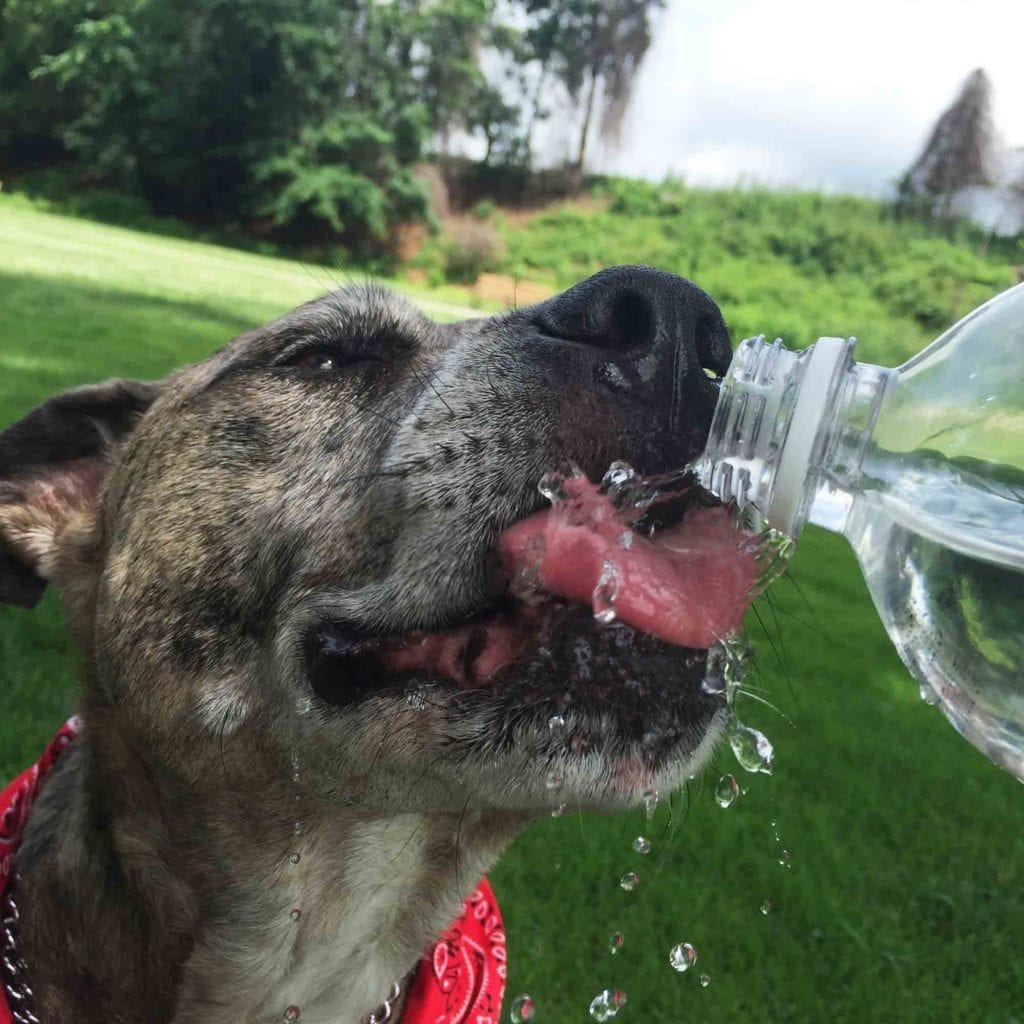 Although most of us are familiar with that unpleasant sweaty feeling during the summer, many people probably don’t consider whether pets sweat. With all that fur, how would we even know if they do? And what would be the purpose?
Although most of us are familiar with that unpleasant sweaty feeling during the summer, many people probably don’t consider whether pets sweat. With all that fur, how would we even know if they do? And what would be the purpose?
The Schertz team tackles this very sweaty subject to help you understand how your cat or dog stays cool.
Pets Sweat…But Not Like Us
Being out in the backyard on a hot day probably seems pretty uncomfortable for you. As you turn to see what your pet is up to, you find him or her under a nearby tree, tongue out, and doing what dogs do: panting. While sweating isn’t the most enjoyable of experiences, the fact remains that humans have a great advantage over cats and dogs when it comes to our ability to cool down.
Human bodies are covered in sweat glands, which aid in cooling off the body by moving moisture to the skin’s surface where it evaporates. Unlike us, however, our pets have very few sweat glands, and these are located primarily on your pet’s paw pads.
As many owners have guessed, dogs use panting as their main way of regulating body temperature. This has a similar effect as sweating, in that warm moisture is moved out of the body through respiration/panting and then evaporates near the surface of the skin. Along with panting is a process in which the veins near the surface of the skin on the face and ears dilate, creating a cooling effect.
Unlike dogs, cats do not pant as a primary way of regulating body temperature. In fact, if your cat is panting, this could be a situation that warrants a call to your veterinarian. Panting in cats is typically an indication that heat stroke or heat stress is occurring. Cats are also able to sweat through their paw pads, and some pets even sweat during moments of fear or anxiety.
Despite some of the innate mechanisms that help your pet stay cool, your pet’s best defense against overheating or becoming dehydrated is to simply avoid the heat and UV rays altogether. That’s why prevention is key to summertime pet safety.
Keeping Your Pet Cool
Now that you know how vulnerable pets are to heat-related problems, you have even more reason to keep your pet cool and comfortable this season.
The best way to prevent emergency situations is to provide lots of cool, fresh water and to keep your pet inside during the warmer times of day. Observe your pet when outdoors, and be aware of any signs of discomfort, including:
- Excessive panting
- Water seeking behavior (trying to drink out of puddles and other standing water sources)
- Lethargy
- Restlessness
- Dry nose/gums
- Drooling
Get your pet to the nearest air conditioned space and call us should these conditions worsen or if your pet begins displaying more serious signs that could lead to heat stroke.
Take extra precaution when traveling with your pet during the summer – and always carry extra water, no matter where you go (to the park or on a road trip).
By being vigilant and keeping your pet cool, you can enjoy those early morning walks or indoor games with your four-legged pal. We hope you have a fun (and safe) summer!
Recent Posts
About Us
We know that choosing the right veterinarian for your pet (and you) can be a challenge. Yet, with our stress-free handling, our long-term, experienced staff, and a state-of-the-art facility, we make the decision an easy one!
